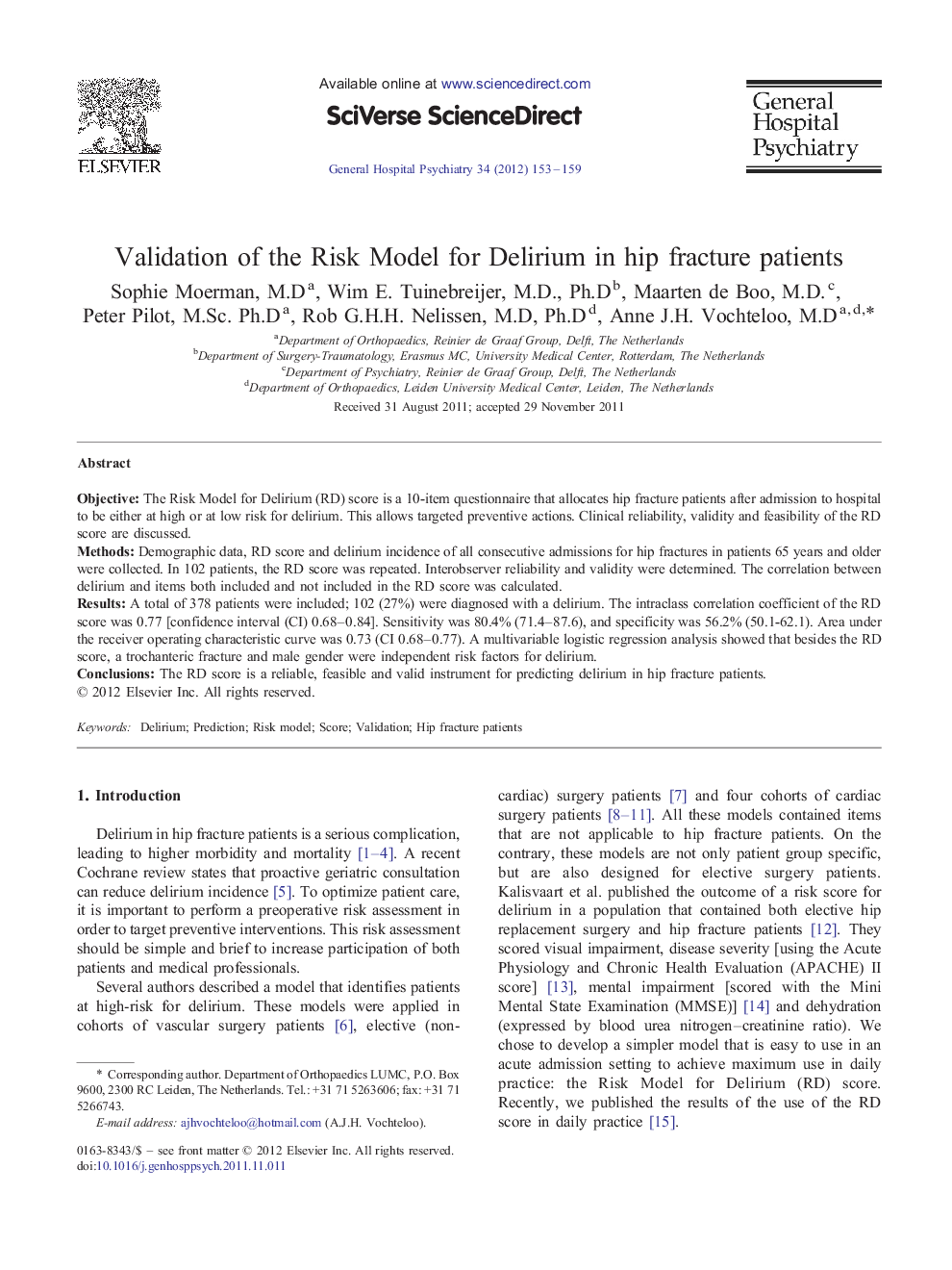| Article ID | Journal | Published Year | Pages | File Type |
|---|---|---|---|---|
| 3238156 | General Hospital Psychiatry | 2012 | 7 Pages |
ObjectiveThe Risk Model for Delirium (RD) score is a 10-item questionnaire that allocates hip fracture patients after admission to hospital to be either at high or at low risk for delirium. This allows targeted preventive actions. Clinical reliability, validity and feasibility of the RD score are discussed.MethodsDemographic data, RD score and delirium incidence of all consecutive admissions for hip fractures in patients 65 years and older were collected. In 102 patients, the RD score was repeated. Interobserver reliability and validity were determined. The correlation between delirium and items both included and not included in the RD score was calculated.ResultsA total of 378 patients were included; 102 (27%) were diagnosed with a delirium. The intraclass correlation coefficient of the RD score was 0.77 [confidence interval (CI) 0.68–0.84]. Sensitivity was 80.4% (71.4–87.6), and specificity was 56.2% (50.1-62.1). Area under the receiver operating characteristic curve was 0.73 (CI 0.68–0.77). A multivariable logistic regression analysis showed that besides the RD score, a trochanteric fracture and male gender were independent risk factors for delirium.ConclusionsThe RD score is a reliable, feasible and valid instrument for predicting delirium in hip fracture patients.
